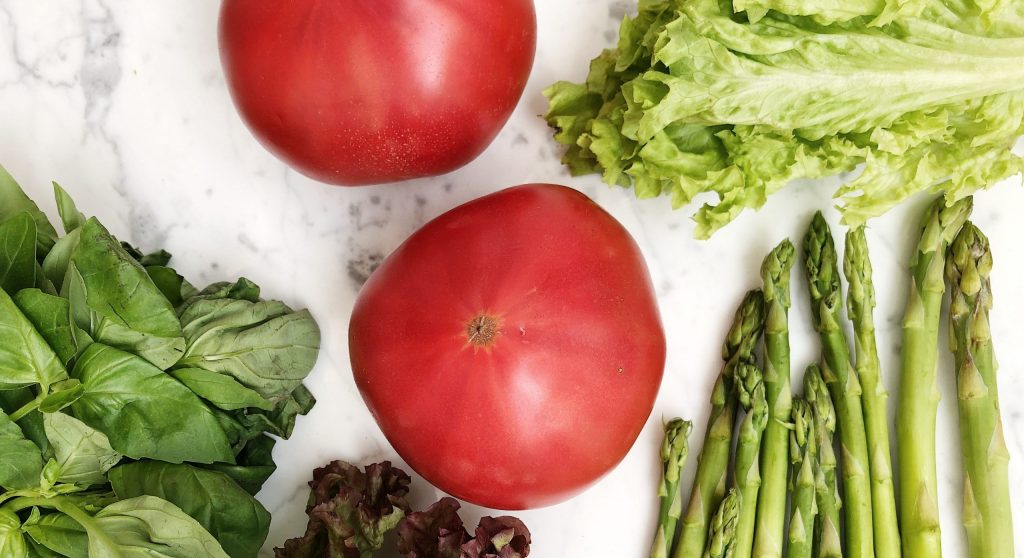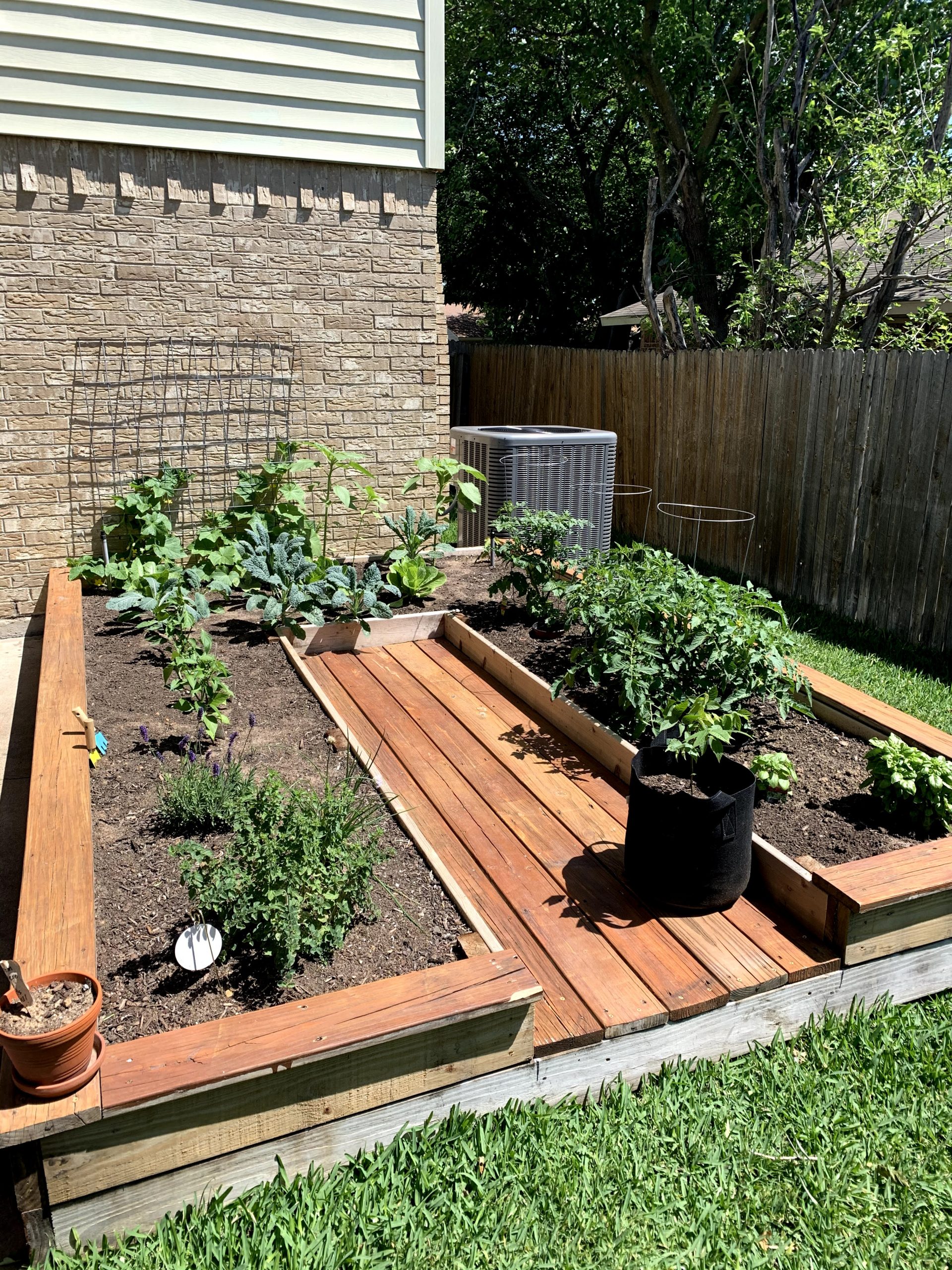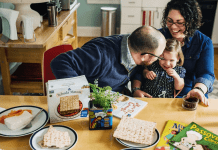 From the time we bought our house almost 5 years ago, my husband and I have been slowly trying to grow vegetables and add to our landscaping. We lived in apartments for the first 7 years of our marriage and were so excited to finally have a real yard! Last winter, we decided to take things to the next level and build a raised vegetable garden in our backyard. We picked out a location, my husband built the bed, we had dirt delivered, and we got to work. This was February 2020, and we had no idea what the rest of the year would hold. I am so grateful for our vegetable garden, because working in the dirt and seeing the literal fruits of my labor saved my sanity, especially in the early days of the pandemic.
From the time we bought our house almost 5 years ago, my husband and I have been slowly trying to grow vegetables and add to our landscaping. We lived in apartments for the first 7 years of our marriage and were so excited to finally have a real yard! Last winter, we decided to take things to the next level and build a raised vegetable garden in our backyard. We picked out a location, my husband built the bed, we had dirt delivered, and we got to work. This was February 2020, and we had no idea what the rest of the year would hold. I am so grateful for our vegetable garden, because working in the dirt and seeing the literal fruits of my labor saved my sanity, especially in the early days of the pandemic.
If you’re looking to get started on your own vegetable garden, I’ve gathered a few resources and tips to help guide you. I’m still very much a beginner gardener, but we had a pretty successful garden last summer and fall and even into this winter. I’m hoping to learn more this year and have even more success! There is great satisfaction in pulling fresh vegetables straight from the land and enjoying them in a meal with your family (or sharing with friends, when you grow way too many jalapenos and tomatoes)!
Preparing Your Garden
There are several tutorials out there for how to build a raised garden bed. We re-used some wood from a deck we disassembled and followed a guide similar to this one on how to build a simple raised bed.
Once our bed was built, we needed dirt. A lot of dirt. If you live in Plano, McKinney, Allen, Frisco, or Richardson, I highly recommend ordering dirt from Texas Pure Products. The prices are reasonable, and the soil worked really well for our bed. It was also a major highlight for my 4-year-old when a real dump truck came to our house!

Planting
Now that you have your garden built and ready to go, it’s time for plants! Before you head off to the nursery and spend all your savings on plants (it’s really tempting to do), start with a little research. Not every plant will grow well in North Texas, and it’s important to pay attention to planting/harvesting seasons. An excellent resource for both vegetable and landscape gardening is McKinney resident Neil Sperry. You can sign up for Neil Sperry’s weekly newsletter here. He offers advice on timing for planting.
My go-to local plant resource is Bruce Miller Nursery. The employees are well-informed, and everything I’ve bought from them has grown well. It’s helpful to come armed with a bit of information—what kind of light and space you have for your plants—and they can advise on what will grow well.
North Haven Gardens is another favorite local nursery. They even offer a Garden Coach Program to help get you started.
If you prefer, you can order seeds online and start them indoors. There are grow kits readily available at both local nurseries and big box gardening centers. Here’s a great resource for ordering seeds online.
Additional Tips
Keep a Gardening Journal
This is something I wish I had started last year. I suggest keeping a journal of what/when you planted, when it sprouted, when you harvested it, and how successful it was. That way, when you start planning your garden for the following year, you can build on past success and avoid repeating the same mistakes. Here’s a simple and functional gardening log and planner from Amazon.
Use the Aggie Method for Fertilizing Tomatoes
When researching for our garden, I hit the library and brought home a ton of books on North Texas vegetable gardens. One tip I picked up was this method for fertilizing tomatoes: Plant an empty pot (with holes) next to each tomato plant. When you want to fertilize, place the fertilizer in the empty pot and fill with water. Continue filling with water until all the fertilizer dissolves. I don’t know if it was because of this trick or just beginner’s luck, but we had a bumper crop of tomatoes last summer! I’m definitely using this method for fertilizing again.
Trick for Growing the Best Basil
My basil last summer was the most beautiful plant in our yard! When I did my final harvest in early fall, I made enough pesto to fill my freezer and share with neighbors and friends as well. One of the tricks with basil is to keep it from going to seed. Once it does that, it doesn’t produce as many leaves and doesn’t taste as good. Whenever I was outside playing with my kids, I’d wander over to the basil plant and pinch back any flowers I saw. The kids can easily help with this simple gardening task.
Add Marigolds and Other Flowers to Your Vegetable Garden
One tip I learned a little late, is that marigolds are excellent pest deterrents. Add marigolds to your vegetable garden and it will help keep a lot of unwanted bugs away! If you have tomato and pepper plants, you’ll need to attract pollinators to your garden. Planting flowers in and around your vegetable garden will bring the pollinators you need for your plants to bear fruit. Zinnias, sweet alyssum, and nasturtium are a few good flowers for pollinators.













